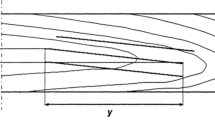Abstract
The natural scatter in mechanical properties of sawn timber must be reduced by grading the material either visually or mechanically. Depending on the grading procedure, the scatter of these properties varies. This study deals with their variation as influenced by the grading procedure. The effect of the grading principle is analyzed based on 4,893 sawn timber specimens from several European natural forests with widths up to 167 mm and depths up to 284 mm and using the method given in EN 14081-2:2010, CEN, Brussels (2010). Grading models for visual grading and machine grading are derived considering different source countries, strength classes and strength class combinations. Material safety factors for the graded material are then estimated in accordance with ISO 2394 (1998) to evaluate the grading outcomes. Analyzing and comparing the lower 5th-percentile to the requirements of EN 384: 2009, CEN, Brussels (2009), it is found that the actual strength for class C24 can be up to 20 % lower than required by the standard. This is true, regardless of whether the timber is graded visually or by an advanced grading machine using dynamic modulus of elasticity and knots. Low strength values can be expected especially in cases where a batch of timber is graded into a single strength class and reject only. High coefficients of variation of the graded material lead to the conclusion that high material safety factors are needed. On the contrary, if the material is graded by a machine and into more than two strength classes in one pass, it can be shown that the required material safety factors can be lower.










Similar content being viewed by others
References
DIN 4074-1: 2008–2012 Sortierung von Holz nach der Tragfähigkeit, Nadelschnittholz. DIN, Berlin
EN 338: 2009 Structural timber—strength classes. CEN, Brussels, 2009
EN 384: 2009 Structural timber—determination of characteristic values of mechanical properties and density. CEN, Brussels, 2009
EN 408: 2009 Timber structures—structural timber and glued laminated timber—determination of some physical and mechanical properties. CEN, Brussels, 2009
EN 13183-1: 2002 Moisture content of a piece of sawn timber. Part 1: Determination by oven dry method. CEN, Brussels, 2002
EN 1912: 2004 + A4: 2009 Structural timber—strength classes—assignment of visual grades and species. CEN, Brussels, 2009
EN 1990—Eurocode—basis of structural design. CEN, Brussels, 2002
EN 1995: 2004 Eurocode 5—design of timber structures, part 1-1: general—common rules and rules for buildings. CEN, Brussels, 2004
EN 14081-2: 2010 Timber structures—strength graded structural timber with rectangular cross section—part 2: Machine grading; additional requirements for initial type testing. CEN, Brussels, 2010
Isaksson T, Thelandersson S (1995) Effect of test standard, length and load configuration on bending strength of structural timber. CIB-W18 paper 28-6-4, Copenhagen
ISO 2394 General principles on reliability for structures, 1998
Øvrum A, Vestøl GI, Høibø OA (2008) Modeling the longitudinal variation of sawn timber grades in Norway spruce (Picea abies (L.) Karst.), Holz als Roh- und Werkstoff 66(3):219–227. doi:10.1007/s00107-008-0237-5
Rais A, Stapel P, van de Kuilen J-W (2010) Assessment of local timber defects during testing and grading as influenced by machine approval procedure. Proceedings WCTE 2010, Riva del Garda, Italy
Ranta-Maunus A, Turk G (2010) Approach of dynamic production settings for machine strength grading. Proceedings WCTE 2010, Riva del Garda, Italy
Rouger F (1997) A new statistical method for the establishment of machine settings, CIB W18. Proceedings paper 30-17-1, Vancouver, Canada
Sandomeer M, Köhler J, Faber MH (2008) Probabilistic output control for structural timber—modelling approach, CIB W18. Proceedings paper 41-5-1, St. Andrews, Canada
SFS-EN 1995: 2004 Eurocode 5—design of timber structures, part 1-1: general—common rules and rules for buildings. NATIONAL ANNEX
Vrouwenvelder T (2012) http://www.rilem.net/docs/tc_jcsspub.pdf. Accessed 01 June 2012
Ziethén R, Bengtsson C (2009) Machine strength grading—a new method for derivation of settings, CIB W18. Proceedings paper 42-5-1, Dübendorf, Switzerland
Acknowledgments
This research is partly based on a feasibility study made by the European wood industries under the Roadmap 2010 Building With Wood programme, and this project is supported by the industry via CEI-Bois. CEI-Bois is the main industrial financier of this project. The Gradewood-project is realised by eight research institutes: Technische Universität München, VTT Technical Research Centre of Finland, BRE, FCBA, SP Wood Technology, HFA Holzforschung Austria, University of Ljubljana, and Swiss Federal Institute of Technology ETH. It belongs to the Wood Wisdom. Net-programme and is funded by national technology development bodies: Federal Ministry of Education and Research (Germany), Tekes Finnish Funding Agency for Technology and Innovation (Finland), Vinnova (Sweden), Ministry of Agriculture (France), and Slovenian Research Agency (Slovenia). The contributions from funding organisations and other support are gratefully acknowledged.
Author information
Authors and Affiliations
Corresponding author
Rights and permissions
About this article
Cite this article
Stapel, P., van de Kuilen, JW.G. Effects of grading procedures on the scatter of characteristic values of European grown sawn timber. Mater Struct 46, 1587–1598 (2013). https://doi.org/10.1617/s11527-012-9999-7
Received:
Accepted:
Published:
Issue Date:
DOI: https://doi.org/10.1617/s11527-012-9999-7




